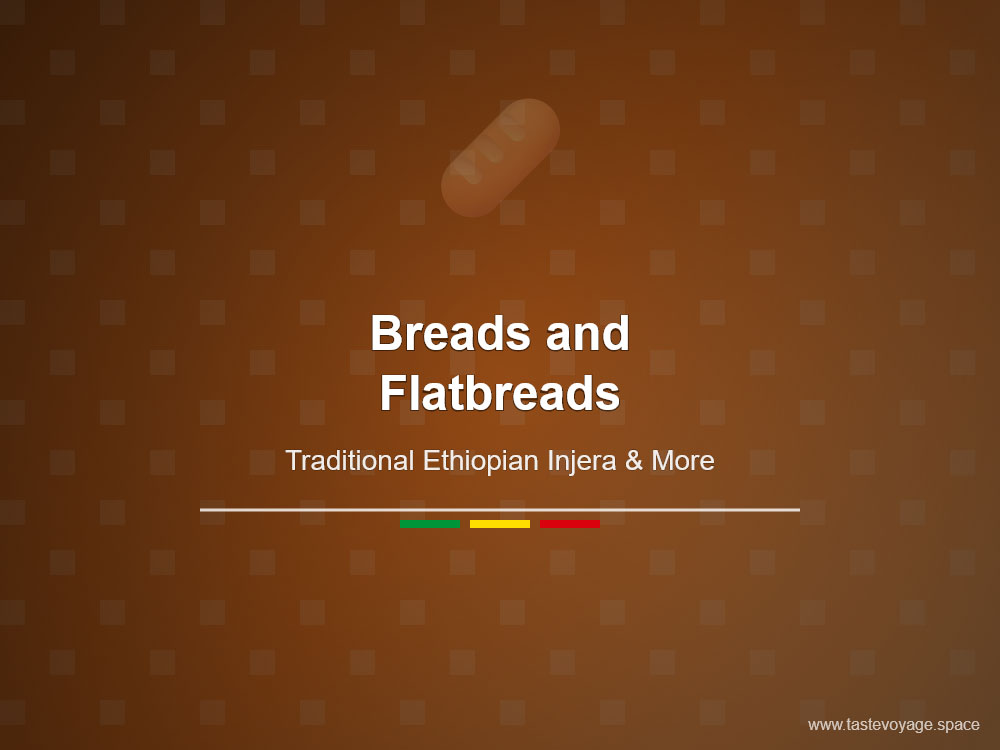How to Make Delicious Ethiopian Gluten-Free Bread Alternatives
Travel the World Through Food >> Breads and Flatbreads>>Ethiopian Cuisine>> How to Make Delicious Ethiopian Gluten-Free Bread Alternatives
How to Make Delicious Ethiopian Gluten-Free Bread Alternatives
Discovering Ethiopian Gluten-Free Bread Alternatives: A Celebration of Cultural Heritage
Ethiopian cuisine is renowned for its rich flavors, vibrant colors, and deep-rooted culinary traditions. Among its many cherished dishes, bread holds a special place, serving as both a staple and a symbol of community and hospitality. Traditional Ethiopian bread, such as injera, is celebrated worldwide for its unique taste and cultural significance. Today, many bakers and food enthusiasts are exploring gluten-free options that honor this culinary heritage, expanding access and appreciation for this iconic cuisine.
The Cultural Significance of Ethiopian Bread
In Ethiopian culture, bread is more than just a food item; it embodies hospitality, connection, and tradition. Injera, a sourdough flatbread made from teff flour, is often the centerpiece of communal meals. Its spongy texture and tangy flavor facilitate a shared dining experience, fostering bonds among family and friends. The preparation of injera is a time-honored practice passed down through generations, reflecting the community’s values and history.
Creating gluten-free alternatives to traditional Ethiopian bread is a meaningful way to preserve these cultural values. Such adaptations make this beloved cuisine accessible to those with gluten sensitivities or dietary restrictions, allowing more people to partake in the cultural experience. These alternatives maintain the essence of Ethiopian bread’s culinary significance while embracing modern dietary needs.
The Culinary Significance of Gluten-Free Choices
Ethiopian gluten-free bread alternatives not only respect dietary choices but also highlight the ingenuity and versatility of traditional ingredients. Many traditional Ethiopian grains, such as teff, sorghum, millet, and maize, are naturally gluten-free and form the foundation of authentic bread recipes. Using these grains in innovative ways showcases their value and promotes biodiversity in culinary practices.
These gluten-free options often feature a delightful combination of flavors and textures, from the nutty richness of teff to the hearty robustness of sorghum. They can be adapted to various cooking methods, allowing cooks to create bread that aligns with Traditional Ethiopian flavors while catering to modern dietary preferences. This culinary innovation celebrates Ethiopia’s rich agricultural heritage and the incredible versatility of its grains.
Honoring Tradition Through Innovation
Exploring gluten-free Ethiopian bread alternatives is more than just a dietary choice; it’s a tribute to the enduring legacy of Ethiopian cuisine. By embracing gluten-free grains and traditional methods, cooks help preserve a unique culinary identity that has stood the test of time. These alternatives serve as a bridge between the past and the present, preserving cultural values while embracing contemporary health trends.
In conclusion, Ethiopian gluten-free bread alternatives are a beautiful expression of cultural pride and culinary innovation. They honor traditional flavors and communal values, while also making this treasured cuisine accessible to a wider audience. Whether enjoyed at family gatherings or shared with friends, these breads remind us of the rich history and enduring significance of Ethiopian culinary heritage.
By appreciating the cultural and culinary importance of Ethiopian gluten-free bread, we celebrate a vibrant tradition that continues to inspire and unite people around the world.
